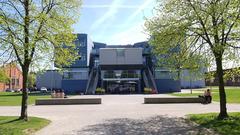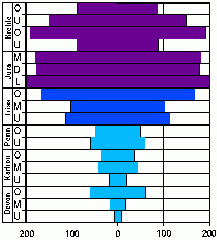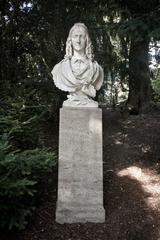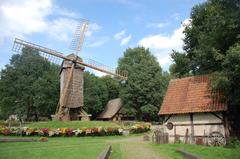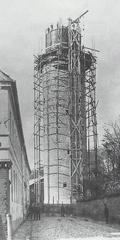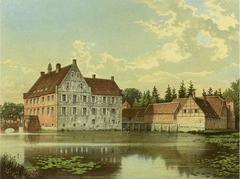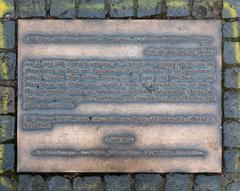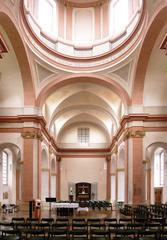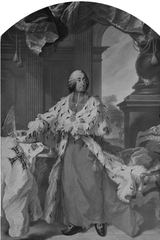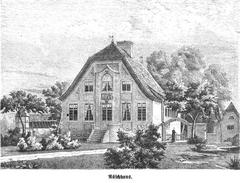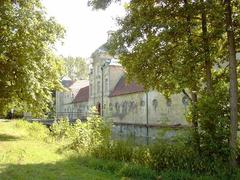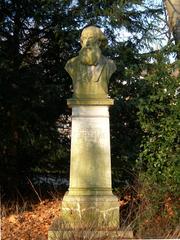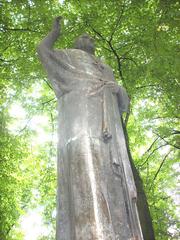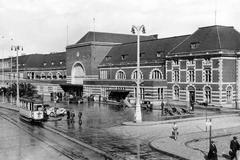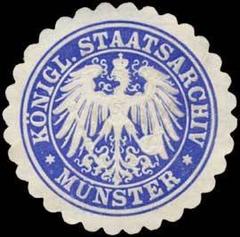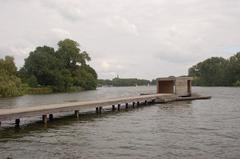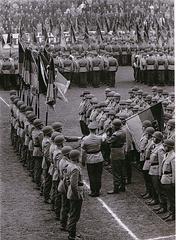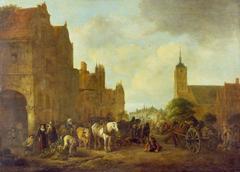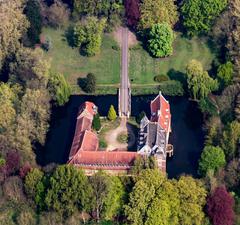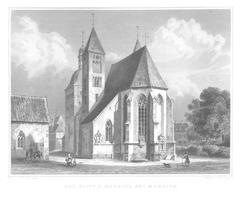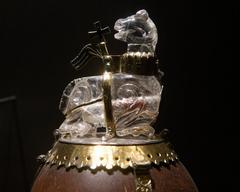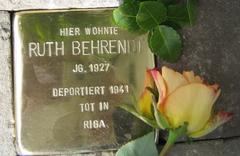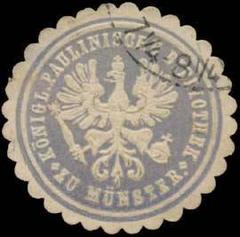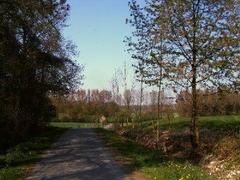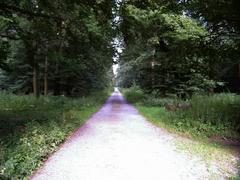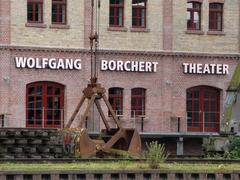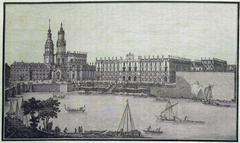
St. Ludgeri Münster: Visiting Hours, Tickets, and Historical Sites Guide
Date: 04/07/2025
Introduction
St. Ludgeri Church, set in the historic center of Münster, Germany, is a monumental testament to the city’s religious, architectural, and cultural evolution. Founded in the 12th century and dedicated to Saint Ludger, Münster’s first bishop and a key figure in Westphalian Christianization, the church embodies centuries of spiritual devotion and urban development. This guide provides all the essential information for visitors, including updated visiting hours, ticketing, accessibility, guided tours, nearby attractions, and practical travel tips. Whether you’re captivated by Romanesque and Gothic architecture, seeking spiritual reflection, or exploring Münster’s vibrant community life, St. Ludgeri offers an accessible and rewarding experience.
For detailed information and further insights, consult sources such as St. Ludgeri Münster: Visiting Hours, Tickets & Historical Guide and Penguin and Pia’s Münster Travel Guide.
Contents
- Historical Overview
- Origins and Foundation
- Architectural Evolution
- Exterior Architectural Features
- Interior Highlights
- Religious and Cultural Significance
- Visitor Information
- Visiting Hours
- Tickets and Entry
- Accessibility
- Guided Tours and Events
- Photography Guidelines
- Nearby Attractions and Travel Tips
- Frequently Asked Questions (FAQ)
- Conclusion
- References
Historical Overview
Origins and Foundation
St. Ludgeri was established in the late 12th century to serve Münster’s expanding southern districts. Saint Ludger’s foundational influence on the region’s Christianization is commemorated in the church’s dedication. The original structure began as a wooden chapel around 1170, later replaced by a Romanesque stone church under Bishop Hermann II.
Architectural Evolution
- Romanesque Beginnings: The initial stone church (circa 1180–1200) featured a “gebundenes System” floorplan, with a three-aisled nave and robust Romanesque characteristics.
- Gothic Transformations: After a city fire in 1383, the church was rebuilt in the Gothic style, adding a high choir with pioneering net vaulting and a heightened crossing tower.
- 19th and 20th Century Restorations: The western towers were reconstructed in the late 19th century inspired by Cologne’s St. Gereon. World War II damages were meticulously repaired, including modern stained glass by Vincenz Pieper.
Exterior Architectural Features
St. Ludgeri stands at Ludgeristraße 40, 48143 Münster, adjacent to Marienplatz in the city’s historic center (Penguin and Pia). Its limestone tower is a prominent city landmark, harmonizing with Münster’s medieval architecture and offering vertical Gothic accents atop Romanesque foundations. The minimalist facade is punctuated by lancet windows, while the main entrance is set beneath a pointed Gothic arch. Marienplatz itself features contemporary sculptures, providing a visual dialogue between past and present (The Crazy Tourist).
Interior Highlights
- Nave and Choir: The basilican layout, with a central nave and side aisles, is illuminated by tall lancet windows. The Gothic choir, rebuilt after the 1383 fire, is especially bright due to its large pointed-arch windows.
- Vaulting and Ceilings: The net vaulting in the choir is a regional innovation, while other sections feature barrel or ribbed vaults.
- Art and Furnishings: Highlights include the Renaissance choir stalls, the Baroque high altar, and the unique “Cross without Arms.” Modest stained glass and intricately carved pews add to the church’s serene atmosphere.
- Organ and Acoustics: The postwar organ, coupled with the vaults’ acoustics, makes St. Ludgeri a preferred venue for concerts and choral performances.
Religious and Cultural Significance
As a former collegiate and current parish church, St. Ludgeri has played a central spiritual role since the Middle Ages. Its dedication to St. Ludger connects present generations to Münster’s Christian origins. Four historic bells, the oldest from 1464, are integral to local traditions, believed to protect the city and mark important events. The church’s resilience through fires, war, and social upheaval mirrors the enduring faith of its community (tuermerinvonmuenster.de). Today, St. Ludgeri remains a hub for liturgy, ecumenical events, concerts, and cultural gatherings (kirche-mswest.de).
Visitor Information
Visiting Hours
- Monday to Saturday: 9:00 AM – 6:00 PM
- Sunday and Public Holidays: 12:00 PM – 6:00 PM Note: Hours may vary for special services or events.
Tickets and Entry
- Admission: Free
- Special Events/Tours: Tickets required (typically €5 for adults, €3 for students/seniors, children under 12 free).
Accessibility
- Main Church: Wheelchair accessible with ramps at the main entrance.
- Bell Tower: Accessible only via narrow stairs and not suitable for those with mobility impairments.
Guided Tours and Events
Guided tours are available by appointment and provide in-depth exploration of St. Ludgeri’s architecture, history, and religious significance. Special events—including concerts and processions—are announced on the church’s website and local tourism portals.
Photography Guidelines
Photography is allowed without flash. Please be respectful during services and avoid disturbing worshippers.
Nearby Attractions and Travel Tips
St. Ludgeri’s central location makes it a convenient starting point for exploring Münster’s historic center. Notable nearby sites include:
- Münster Cathedral (St.-Paulus-Dom): Renowned for its astronomical clock.
- St. Lambert’s Church: Famous for its Gothic design and Anabaptist history.
- Prinzipalmarkt: Historic market square lined with gabled houses.
- Picasso Museum Münster: Showcasing modern art (try-travel.com).
Travel Tips:
- Visit in early morning or late afternoon for a tranquil atmosphere.
- Modest dress is appreciated, especially during services.
- Information is available in German and English; staff are helpful to international visitors.
- Restrooms and a small souvenir kiosk are available on-site.
Frequently Asked Questions (FAQ)
Q: Are tickets required for entry?
A: Entry is free; tickets are only necessary for special events or guided tours.
Q: What are the opening hours?
A: Monday–Saturday: 9:00 AM–6:00 PM; Sunday and holidays: 12:00 PM–6:00 PM (check for seasonal changes).
Q: Is the church wheelchair accessible?
A: Yes, though the bell tower is not accessible for those with mobility impairments.
Q: How can I book a guided tour?
A: Bookings can be made via the parish office or the official website (St. Ludgeri Münster Parish).
Q: Can I take photographs inside?
A: Yes, but please avoid flash and be respectful during services.
Conclusion
St. Ludgeri Church is a cornerstone of Münster’s religious and cultural heritage—offering an inspiring blend of Romanesque sturdiness, Gothic elegance, and vibrant community life. Its central location, free entry, and thoughtful accessibility make it ideal for all visitors. Enhance your visit with a guided tour, attend a concert, or simply spend a quiet moment appreciating the interplay of light, stone, and history in this remarkable sanctuary.
For the most current details, event updates, and virtual experiences, visit the official parish website or explore recommended travel resources. Don’t forget to check out nearby attractions that further showcase Münster’s rich architectural and spiritual landscape.
References
- St. Ludgeri Münster: Visiting Hours, Tickets & Historical Guide
- St. Ludgeri Church Münster: Visiting Hours, Tickets & Architectural Highlights
- Visiting St. Ludgeri Church in Münster: History, Tickets, and Travel Tips
- Visiting St. Ludgeri Church in Münster: Hours, Tickets, History, and Travel Tips
- The Crazy Tourist: 15 Best Things to Do in Münster, Germany
- Kirche Münster West














